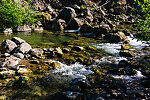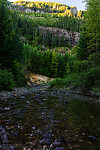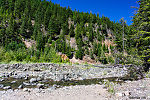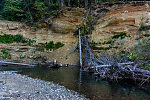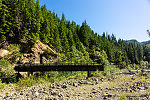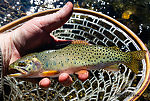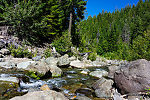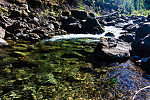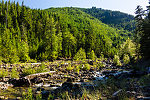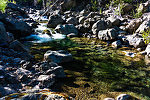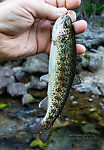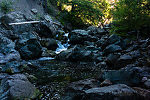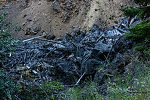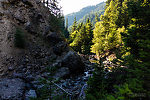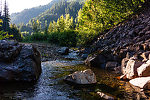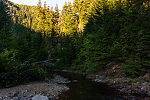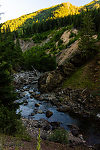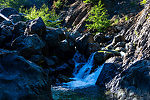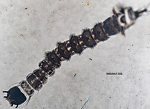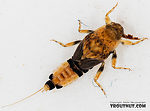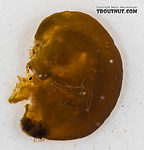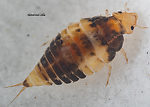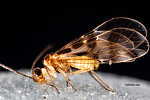Blog & Latest Updates
Fly Fishing Articles
Insects by Common Name


Latest updates, page 12
Productive day on a new small mountain stream
Thursday (July 25th), I took a tolerably short drive out of Seattle to a little-known stream on the east slope of the Cascades. The fishing was slow at first during midday in the pocket water of the broad, rocky channel, but as I worked my way upstream valley tightened up into a canyon with shallower bedrock (meaning a lot more water flowing on the surface and less through the gravel) and deep pools created by large boulders.
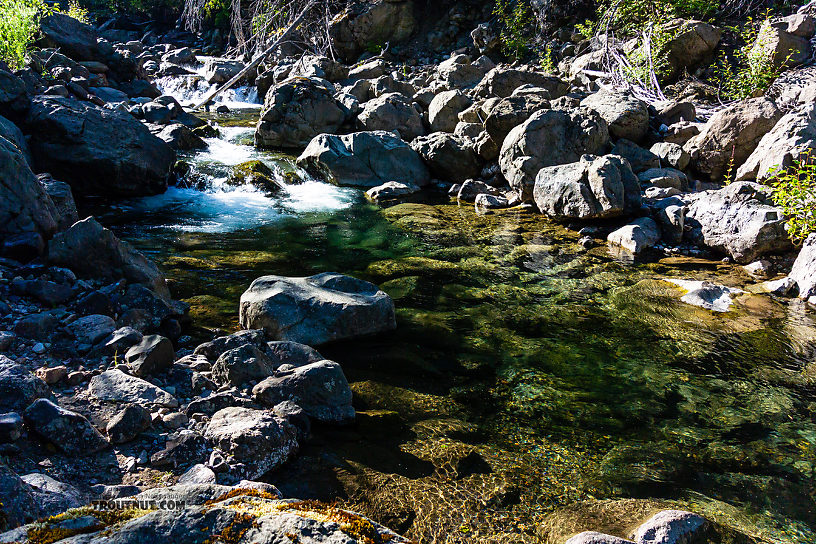
The combination of depth, shade, and the advancing hour improved the action, and I caught a few dozen rainbows, westslope cutthroat, and coastal cutthroat trout as I moved up through the canyon. There were a surprising number of 9- to 12-inchers for a creek small enough that I "wet waded" without getting my feet wet until they got hot and I wanted to cool down.
Toward the top of the canyon I reached a barrier waterfall around 8 feet high.
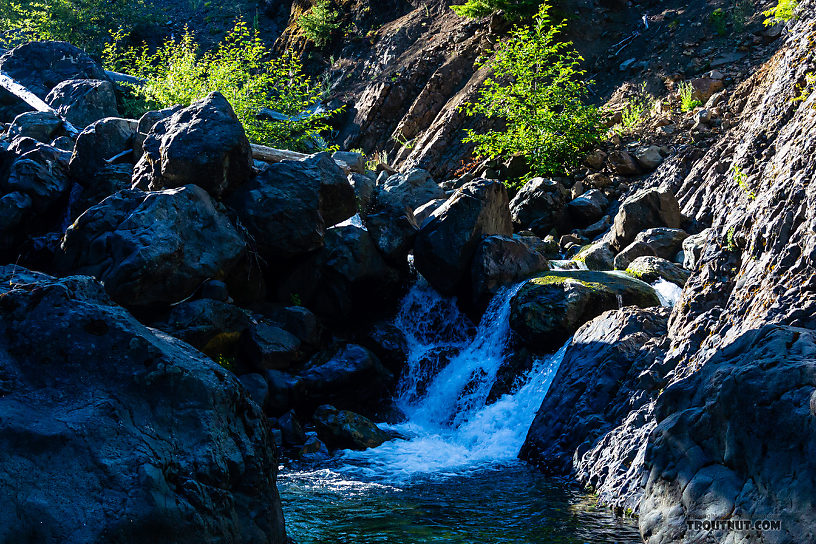
I could have crossed the creek below it and scrambled up the boulders to keep fishing, but it was getting late and I wanted to see what looked on Google Earth like some very different water above the canyon. So I climbed up a steep slope of loose dirt to the height of the treetops, where the road/trail wound along above the canyon, and I dropped back to the river just past the canyon. Here it was a completely different stream, meandering and low-gradient with small gravel, ankle-deep riffles and inviting little pools at each bend.
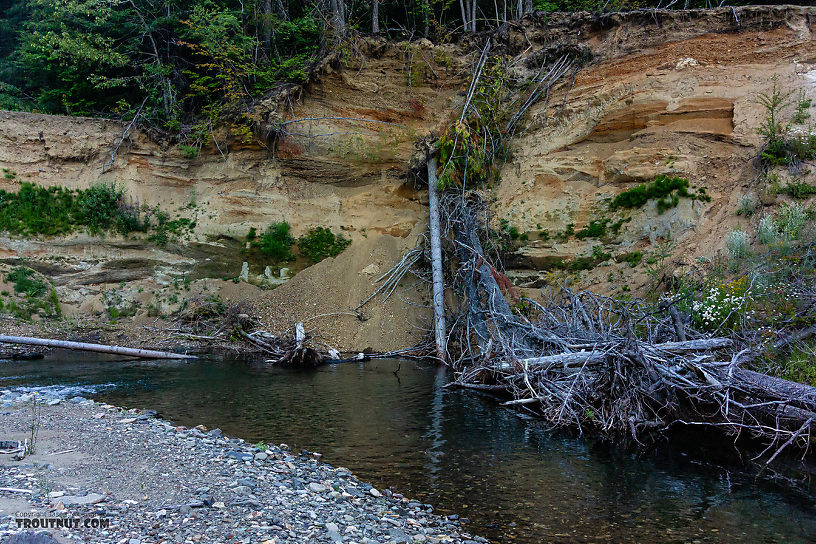
Despite the skinny water, it was hard to drop a fly anywhere without a trout smashing it. I caught a few dozen more in just an hour or two, all westslope cutthroat. Apparently the falls in the canyon were an impassible barrier that blocked the other species. I called it quits when the fishing was still hot, because I wanted light to walk out and collect some bugs.
There wasn't a lot of insect activity to get the fish rising, although in the evening there were sporadic rises in most pools. The few adult bugs I nabbed were collected on the trail above the river. Collecting nymphs with my kicknet before leaving was very productive, as I found good specimens of for uncommon species that weren't yet represented on this site (or at least not by my closeups). Among others, these included exquisitely colored nymphs of Attelella delantala:
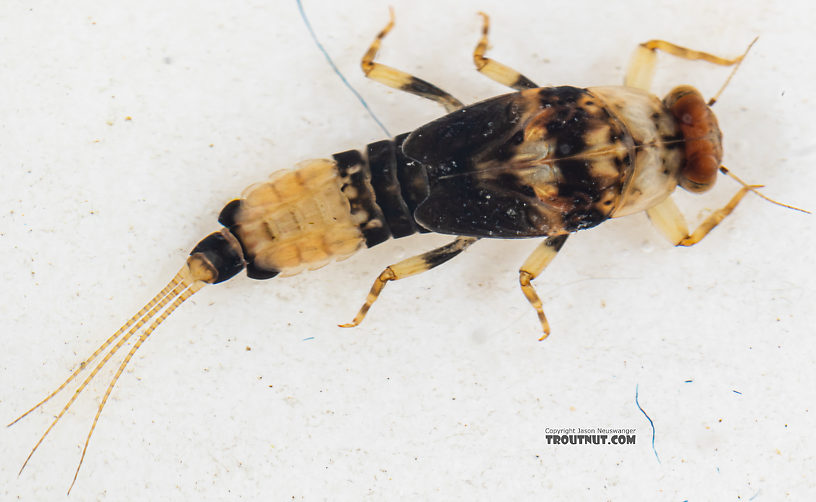
The distinctive Drunella pelosa, which has only been collected a few times in Washington:
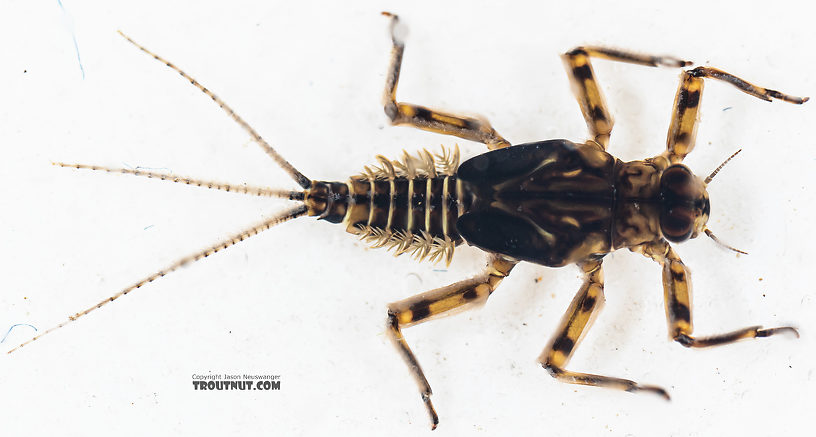
And a male spinner of Paraleptophlebia sculleni. This species has only previously been reported from Oregon, but I'm fairly confident in the ID from both the pictures and putting a few specimens under the dissecting microscope.
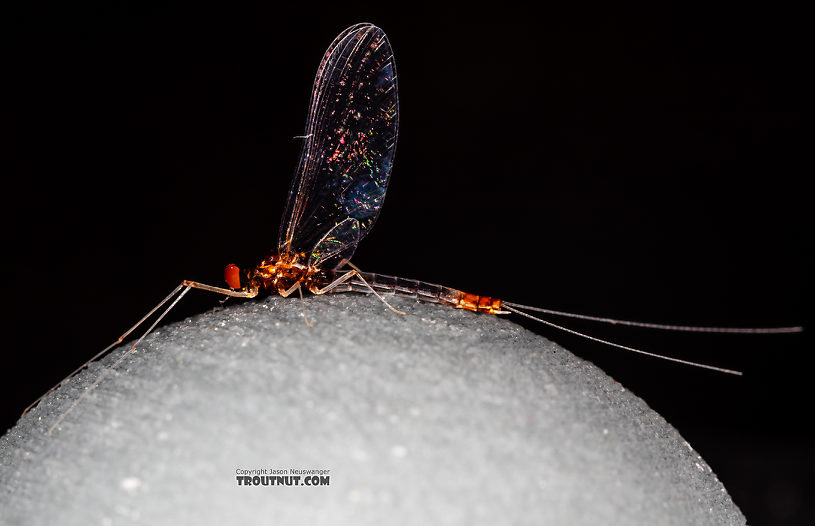

The combination of depth, shade, and the advancing hour improved the action, and I caught a few dozen rainbows, westslope cutthroat, and coastal cutthroat trout as I moved up through the canyon. There were a surprising number of 9- to 12-inchers for a creek small enough that I "wet waded" without getting my feet wet until they got hot and I wanted to cool down.
Toward the top of the canyon I reached a barrier waterfall around 8 feet high.

I could have crossed the creek below it and scrambled up the boulders to keep fishing, but it was getting late and I wanted to see what looked on Google Earth like some very different water above the canyon. So I climbed up a steep slope of loose dirt to the height of the treetops, where the road/trail wound along above the canyon, and I dropped back to the river just past the canyon. Here it was a completely different stream, meandering and low-gradient with small gravel, ankle-deep riffles and inviting little pools at each bend.

Despite the skinny water, it was hard to drop a fly anywhere without a trout smashing it. I caught a few dozen more in just an hour or two, all westslope cutthroat. Apparently the falls in the canyon were an impassible barrier that blocked the other species. I called it quits when the fishing was still hot, because I wanted light to walk out and collect some bugs.
There wasn't a lot of insect activity to get the fish rising, although in the evening there were sporadic rises in most pools. The few adult bugs I nabbed were collected on the trail above the river. Collecting nymphs with my kicknet before leaving was very productive, as I found good specimens of for uncommon species that weren't yet represented on this site (or at least not by my closeups). Among others, these included exquisitely colored nymphs of Attelella delantala:

The distinctive Drunella pelosa, which has only been collected a few times in Washington:

And a male spinner of Paraleptophlebia sculleni. This species has only previously been reported from Oregon, but I'm fairly confident in the ID from both the pictures and putting a few specimens under the dissecting microscope.

Photos by Troutnut from Mystery Creek #249 in Washington
On-stream insect photos by Troutnut from Mystery Creek #249 in Washington
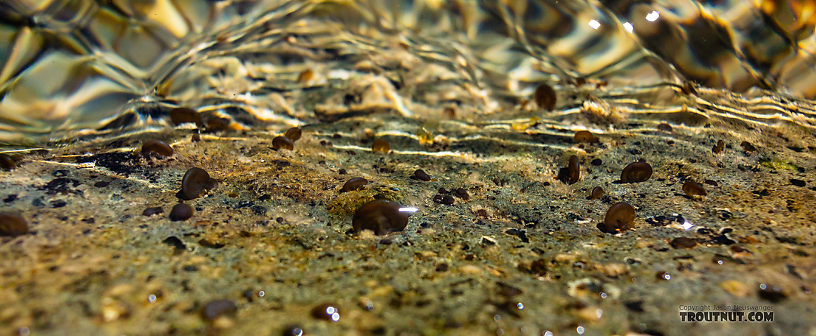
Cases made by larvae of some sort of Chironomid midge, which I photographed with my bug kit back in the studio.
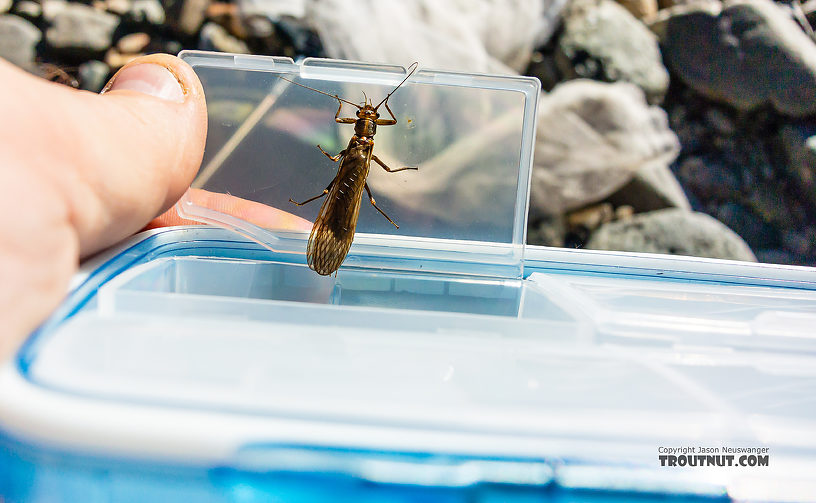
This Calineuria californica female was captured and placed in "bug jail," but was released when I saw it was loaded with eggs and about to drop them, and I could tell it was the same specis (albeit different gender) I photographed a few days ago.
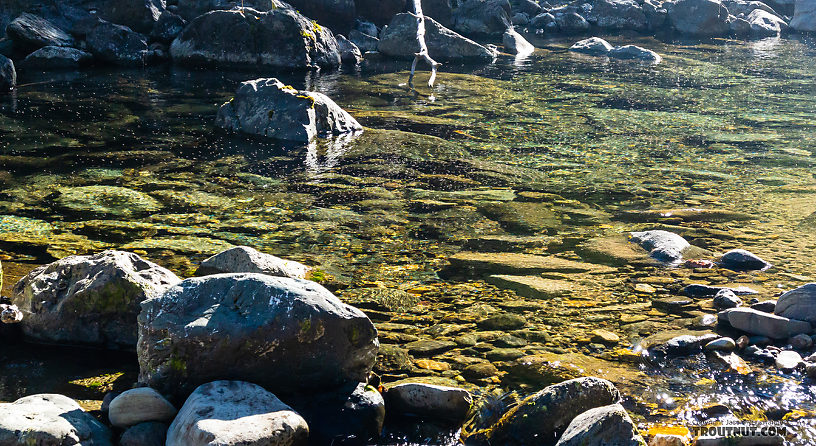
Thousands of midges swarming over a sunny pool.
Closeup insects by Troutnut from Mystery Creek #249 in Washington
Quick evening trip to the South Fork Snoqualmie
My wife and I drove up to the nearest trout stream for some quick evening fishing. I hoped to put her on some fish in the pools that allowed easier casting, but they seemed oddly devoid of fish. The ones I caught were rising sporadically, tight against cover that would snag most flies and required precise presentation. Retention is allowed on this stream, so I think maybe the easy pools got fished out.
Little green stoneflies (likely Alloperla) were common in the air in this fast-water reach, and I saw several on the water too.
Little green stoneflies (likely Alloperla) were common in the air in this fast-water reach, and I saw several on the water too.
Photos by Troutnut from the South Fork Snoqualmie River in Washington
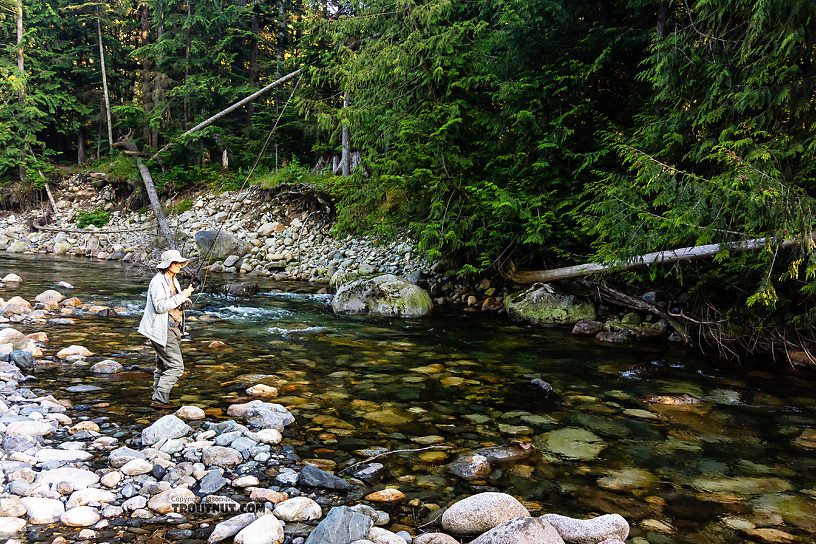
StateWashington
LocationSouth Fork Snoqualmie River
Date TakenJul 20, 2019
Date AddedJul 22, 2019
AuthorTroutnut
CameraNIKON 1 AW1
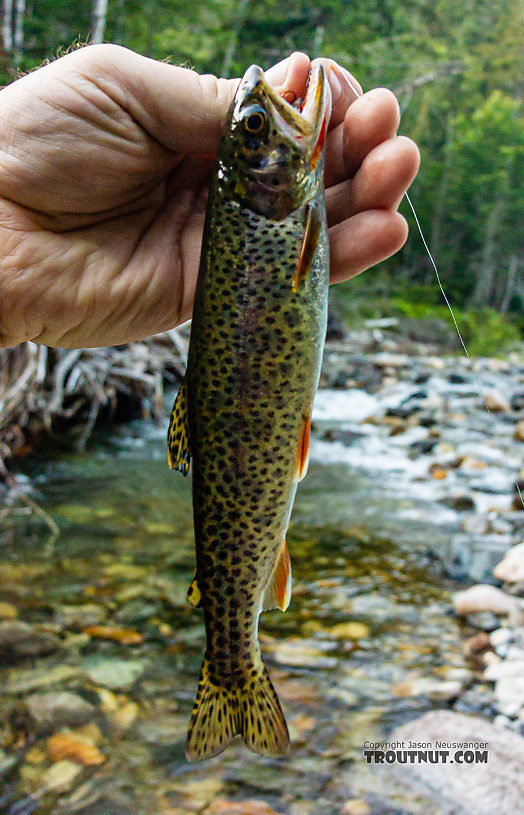
Pretty little coastal cutthroat from the South Fork.
StateWashington
LocationSouth Fork Snoqualmie River
Date TakenJul 20, 2019
Date AddedJul 22, 2019
AuthorTroutnut
CameraNIKON 1 AW1
Closeup insects by Troutnut from the South Fork Snoqualmie River in Washington
Male Calineuria californica (Golden Stone) Stonefly Adult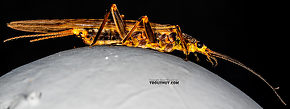 View 15 PicturesA few of these larger stoneflies were fluttering around the South Fork on an evening dominated by much smaller species.
View 15 PicturesA few of these larger stoneflies were fluttering around the South Fork on an evening dominated by much smaller species.
This one has been difficult to identify. I can't spot any of the gill remnants characteristic of Perlidae, but the wing venation (Venation: The pattern in which the veins on the wings of an insect are arranged. It is usually one of the most useful identifying characteristics.) seems to point in that direction. I tried keying it out as Perlodidae but arrived at Isoperla, every western species of which has significantly smaller bodies than this one.
Edit: See forum comments for a likely correct identification.
 View 15 PicturesA few of these larger stoneflies were fluttering around the South Fork on an evening dominated by much smaller species.
View 15 PicturesA few of these larger stoneflies were fluttering around the South Fork on an evening dominated by much smaller species.This one has been difficult to identify. I can't spot any of the gill remnants characteristic of Perlidae, but the wing venation (Venation: The pattern in which the veins on the wings of an insect are arranged. It is usually one of the most useful identifying characteristics.) seems to point in that direction. I tried keying it out as Perlodidae but arrived at Isoperla, every western species of which has significantly smaller bodies than this one.
Edit: See forum comments for a likely correct identification.
Collected July 20, 2019 from the South Fork Snoqualmie River in Washington
Added to Troutnut.com by Troutnut on July 22, 2019
Added to Troutnut.com by Troutnut on July 22, 2019
New "identification needs" page on the site
In the past month I've added a large number of new specimens to the insect encyclopedia, photographed on trips to the Montana/Wyoming/Idaho area for the last two summers. I haven't learned my Western hatches very well yet, so I'm relying on expert help (or slowly trudging my way through keys as time allows) to identify most of them.
To make this process easier and also catch up on specimens that have fallen through the cracks over the years, I created a page that automatically lists specimens that aren't identified as specifically as one could reasonably expect. I'll use this to guide my own ID attempts and I hope it helps some of the other experts who like to weigh in here.
The new page is called identification needs, and it's linked from the top of the Aquatic Insect Encyclopedia page for easy access once this post falls off the front page.
To make this process easier and also catch up on specimens that have fallen through the cracks over the years, I created a page that automatically lists specimens that aren't identified as specifically as one could reasonably expect. I'll use this to guide my own ID attempts and I hope it helps some of the other experts who like to weigh in here.
The new page is called identification needs, and it's linked from the top of the Aquatic Insect Encyclopedia page for easy access once this post falls off the front page.
Pinched-down barbs vs designed and manufactured barbless hooks?
Recently I've been fishing entirely with barbless flies, and I've pinched down the barbs on everything in my fly boxes. To some extent this is because I'm sure it helps a little bit with survival; the scientific research is mixed on whether this is a big enough difference to matter to whole populations, but I know I used to damage a fish once in a while because the barb made the hook hard to remove, and now I don't. However, my main motive is a form of laziness: I fish places that require barbless hooks sometimes, and it's easier to de-barb everything and err on the side of caution than to keep track of the rules about that.
I found an interesting blog post recently by John Newbury talking about barbless hooks for Czech nymphs and how retention wasn't very good on barbless hooks that were manufactured using the same designs as barbed hooks but minus the barbs. I assume the same reasoning would apply to pinched barbs, too. As an alternative, he suggested hooks designed for retention when fished barbless such as the Hanak 333 BL and Fulling Mill Czech Hook. I've never used either of those, but the recently-started Montana brand Firehole Sticks seems to use similar design principles and I have fished those with some success.
However, I haven't really had an opportunity to do a side-by-side comparison between those designed barbless hooks and de-barbed hooks using similar flies. I'm curious if anybody else here has done enough of that to form an opinion.
I found an interesting blog post recently by John Newbury talking about barbless hooks for Czech nymphs and how retention wasn't very good on barbless hooks that were manufactured using the same designs as barbed hooks but minus the barbs. I assume the same reasoning would apply to pinched barbs, too. As an alternative, he suggested hooks designed for retention when fished barbless such as the Hanak 333 BL and Fulling Mill Czech Hook. I've never used either of those, but the recently-started Montana brand Firehole Sticks seems to use similar design principles and I have fished those with some success.
However, I haven't really had an opportunity to do a side-by-side comparison between those designed barbless hooks and de-barbed hooks using similar flies. I'm curious if anybody else here has done enough of that to form an opinion.
Just a quick shot from the drive home.
On the last day of this year's Montana trip, I had a fun visit in the morning with Pat Clayton from Fish Eye Guy Photography, who I think it's safe to call the best trout photographer in the world. He recently opened a brick-and-mortar gallery in Philipsburg showcasing some of the best of his must-see work. I didn't take any pictures there (taking pictures of pictures would seem odd), but check out his website if you haven't seen it.
I did snap a quick photo of the Columbia River from a particularly scenic spot on the long drive home to the Seattle area.
I did snap a quick photo of the Columbia River from a particularly scenic spot on the long drive home to the Seattle area.
Photos by Troutnut from the Columbia River in Washington
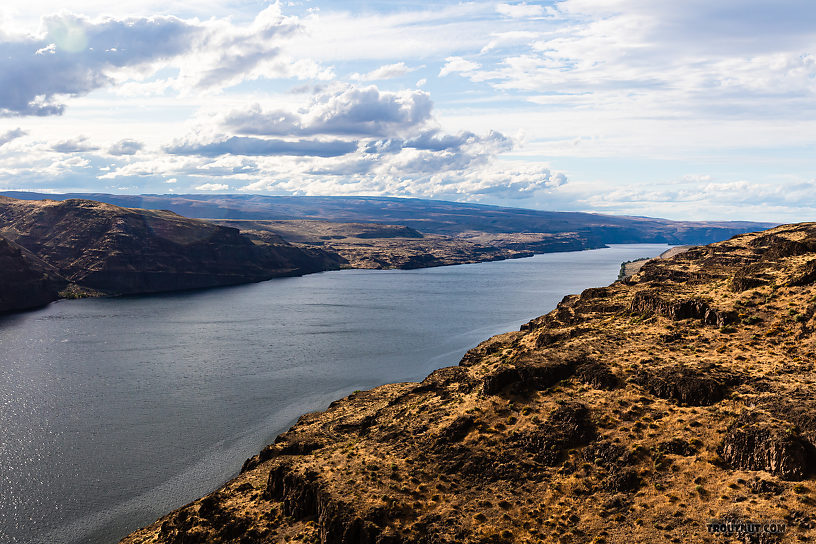
When driving home through eastern Washington we always like to stop at this overlook of the Columbia in the high desert.
StateWashington
LocationColumbia River
Date TakenJul 10, 2019
Date AddedJul 18, 2019
AuthorTroutnut
CameraCanon EOS 7D Mark II
Top 10 Fly Hatches
Top Gift Shop Designs
Eat mayflies.
Top Insect Specimens
Miscellaneous Sites
Troutnut.com is copyright © 2004-2024 Jason
Neuswanger (email Jason). See my FAQ for information about use of my images.
 privacy policy
privacy policy

